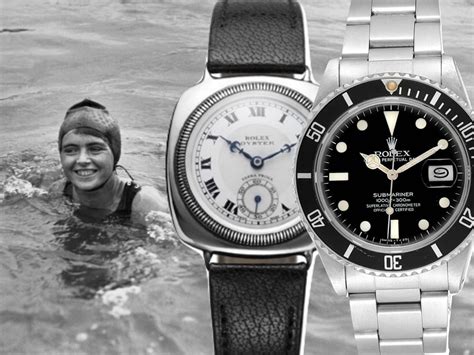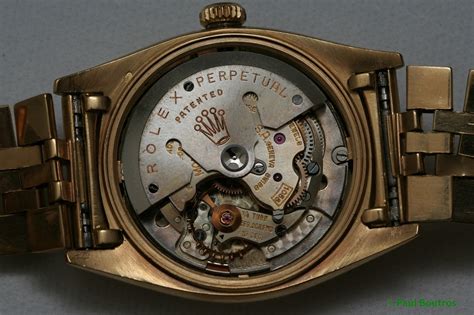rolex in 1914 | rolex part 1 rolex in 1914 By obtaining the very first “Class A” rating certificate for a wristwatch from the Kew Observatory near London, on 15 July 1914, Rolex accomplished an exploit that would forever . Left heart catheterization is done via femoral, subclavian, radial, or brachial artery puncture, with a catheter passed into the coronary artery ostia and/or across the aortic valve into the left ventricle (LV). Catheterization of the left atrium (LA) and LV is occasionally done using transseptal perforation during right heart catheterization.Echocardiography was traditionally used in the diagnosis of left ventricular non-compaction, with the addition of contrast greatly increasing the sensitivity of this examination. However, cardiac MRI is now considered the .
0 · rolex wrist watches history
1 · rolex timepiece history
2 · rolex part 1 history
3 · rolex part 1
4 · rolex history history
5 · rolex germany history
6 · rolex family history
7 · rolex clocks history
Dec 2017 - Present5 years 11 months. certified carpet cleaner. license and insured. | Learn more about carpet busters Lv llc's work experience, education, connections & more by visiting.
More than a century ago, in 1914, the Kew Observatory in Great Britain granted a “Class A” chronometer certificate to a wristwatch for the very first time. This was a major . In 1914, seeking to further its reputation for accuracy, Rolex submitted a 25mm women’s wristwatch to the Kew Observatory in England. The observatory’s standards were .In 1914, the Kew Observatory in Great Britain granted a “Class A” certificate to a wristwatch for the very first time. This major achievement by a small Rolex watch astonished the world and . By obtaining the very first “Class A” rating certificate for a wristwatch from the Kew Observatory near London, on 15 July 1914, Rolex accomplished an exploit that would forever .
Four years later, in 1914, a similar model received from the prestigious Kew Observatory in England the first “Class A” certificate accorded to a wristwatch, a distinction until then reserved .
1914. Kew Observatory in Great Britain awarded a Rolex wristwatch a “Class A” precision certificate, a distinction which until that point in time had been reserved exclusively for marine chronometers.Four years later, in 1914, a different Rolex model received from the prestigious Kew Observatory in England the first ‘Class A’ certificate accorded to a wristwatch, a distinction until then .Later, in 1914, another piece became the first ever wristwatch to be granted a Class A Chronometer Certificate from the Kew Observatory in England, the only non-marine timepiece .
In 1914, a decade after Wilsdorf moved to London, World War I broke out, at which time Wilsdorf changed the name of Wilsdorf & Davis to The Rolex Watch Company Ltd. Fourteen days .
1914. Class “A” precision certificate. Four years later, in 1914, Kew Observatory in Great Britain awarded a Rolex wristwatch a class “A” precision certificate, a distinction which until that point in time had been reserved exclusively for marine chronometers. From that date forward, the Rolex wristwatch was synonymous with precision. More than a century ago, in 1914, the Kew Observatory in Great Britain granted a “Class A” chronometer certificate to a wristwatch for the very first time. This was a major achievement for the timepiece in question, a tiny Rolex watch, and it also marked the advent of the modern precision wristwatch. In 1914, seeking to further its reputation for accuracy, Rolex submitted a 25mm women’s wristwatch to the Kew Observatory in England. The observatory’s standards were the highest in the world at the time.In 1914, the Kew Observatory in Great Britain granted a “Class A” certificate to a wristwatch for the very first time. This major achievement by a small Rolex watch astonished the world and marked the advent of the modern precision wristwatch.
By obtaining the very first “Class A” rating certificate for a wristwatch from the Kew Observatory near London, on 15 July 1914, Rolex accomplished an exploit that would forever change the destiny of the modern watch.Four years later, in 1914, a similar model received from the prestigious Kew Observatory in England the first “Class A” certificate accorded to a wristwatch, a distinction until then reserved for marine chronometers. This was proof that wristwatches and chronometric precision could go hand in hand. The next challenge was waterproofness.1914. Kew Observatory in Great Britain awarded a Rolex wristwatch a “Class A” precision certificate, a distinction which until that point in time had been reserved exclusively for marine chronometers.Four years later, in 1914, a different Rolex model received from the prestigious Kew Observatory in England the first ‘Class A’ certificate accorded to a wristwatch, a distinction until then reserved for marine chronometers. This was proof that wristwatches and chronometric precision could go .
Later, in 1914, another piece became the first ever wristwatch to be granted a Class A Chronometer Certificate from the Kew Observatory in England, the only non-marine timepiece to ever achieve it. The firm of Wilsdorf & Davis was fast becoming synonymous with a commitment to uncompromising excellence.
rolex wrist watches history
rolex timepiece history


In 1914, a decade after Wilsdorf moved to London, World War I broke out, at which time Wilsdorf changed the name of Wilsdorf & Davis to The Rolex Watch Company Ltd. Fourteen days before World War I began, On July 14, 1914, Rolex was the first wristwatch in history to be awarded a Class "A" certificate from the Kew Observatory. Rolex had grown .
1914. Class “A” precision certificate. Four years later, in 1914, Kew Observatory in Great Britain awarded a Rolex wristwatch a class “A” precision certificate, a distinction which until that point in time had been reserved exclusively for marine chronometers. From that date forward, the Rolex wristwatch was synonymous with precision.
More than a century ago, in 1914, the Kew Observatory in Great Britain granted a “Class A” chronometer certificate to a wristwatch for the very first time. This was a major achievement for the timepiece in question, a tiny Rolex watch, and it also marked the advent of the modern precision wristwatch.
In 1914, seeking to further its reputation for accuracy, Rolex submitted a 25mm women’s wristwatch to the Kew Observatory in England. The observatory’s standards were the highest in the world at the time.
In 1914, the Kew Observatory in Great Britain granted a “Class A” certificate to a wristwatch for the very first time. This major achievement by a small Rolex watch astonished the world and marked the advent of the modern precision wristwatch. By obtaining the very first “Class A” rating certificate for a wristwatch from the Kew Observatory near London, on 15 July 1914, Rolex accomplished an exploit that would forever change the destiny of the modern watch.Four years later, in 1914, a similar model received from the prestigious Kew Observatory in England the first “Class A” certificate accorded to a wristwatch, a distinction until then reserved for marine chronometers. This was proof that wristwatches and chronometric precision could go hand in hand. The next challenge was waterproofness.1914. Kew Observatory in Great Britain awarded a Rolex wristwatch a “Class A” precision certificate, a distinction which until that point in time had been reserved exclusively for marine chronometers.
Four years later, in 1914, a different Rolex model received from the prestigious Kew Observatory in England the first ‘Class A’ certificate accorded to a wristwatch, a distinction until then reserved for marine chronometers. This was proof that wristwatches and chronometric precision could go .Later, in 1914, another piece became the first ever wristwatch to be granted a Class A Chronometer Certificate from the Kew Observatory in England, the only non-marine timepiece to ever achieve it. The firm of Wilsdorf & Davis was fast becoming synonymous with a commitment to uncompromising excellence.

rolex part 1 history
rolex part 1
Ciri-ciri dompet Louis Vuitton (LV) palsu Warna, jahitan dan desain dompet. Pada dompet yang palsu itu warnanya terlihat lebih gelap dibandingkan yang asli. Kemudian lihat juga pada desainnya. Untuk yang asli memiliki ukuran yang lebih besar, sementara yang KW ukurannya lebih kecil.
rolex in 1914|rolex part 1



























